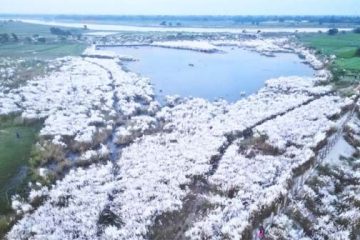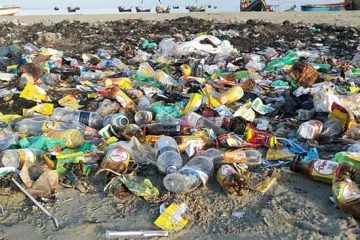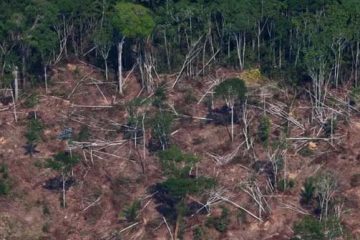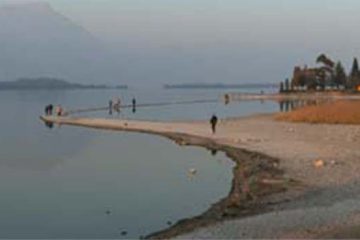Doha Climate Conference
What the outcome yields for Bangladesh?
Md. Mahfujur Rahman
 Thirty-seven industrialized countries had been accused of releasing Greenhouse gases in Kyoto Protocol under United Nations Framework Convention on Climate Change (UNFCCC). Signatory members to the UNFCCC have been meeting annually in Conference of the Parties (COP) to assess progress in dealing with climate change since 1994. This year Climate leaders from all over the world gathered at Doha from 26 November to 8 December 2012 to find ‘what to dos’ for reversing the grim effect of global anthropogenic climate change. However, outcomes are a mixture of both success and failure with depiction of slow pace in progress.
Thirty-seven industrialized countries had been accused of releasing Greenhouse gases in Kyoto Protocol under United Nations Framework Convention on Climate Change (UNFCCC). Signatory members to the UNFCCC have been meeting annually in Conference of the Parties (COP) to assess progress in dealing with climate change since 1994. This year Climate leaders from all over the world gathered at Doha from 26 November to 8 December 2012 to find ‘what to dos’ for reversing the grim effect of global anthropogenic climate change. However, outcomes are a mixture of both success and failure with depiction of slow pace in progress.
Climate change and Bangladesh
Being a high density and low per capita resource country, Bangladesh is very vulnerable to climate change impacts. According to recent research outcomes, it is in second position with respect to climate change vulnerability after Haiti. This floodplain and deltaic country having tropical climate has been a gross victim of flood, cyclone, drought and salinity ingress due to increased temperature, changing pattern of rainfall and variance of water flow in major rivers much of which relate to climate change effect.
The changes in climatic factors are affecting life and livelihood of millions of people in Bangladesh. Due to change in seasonal distribution of rainfall early and late floods are commencing in the haor areas more frequently. Such haor floods destroyed major crops of the area in 2010. Scarcity of potable water and reduced agricultural production are major threats in coastal districts due to rising sea level and salinity ingress. People in many areas of Chittagong and Khulna are compelled to store rain water in monsoon for drinking purpose all the year round. Drought in Rajshahi district tremendously affected mango production in 2011.
Rising flood water in the flood plains of Jamuna, Padma and Meghna river and salinity in the coastal districts such as Patuakhali, Jhalakathi are major threats to rice cultivation. Not only this the number and severity of tropical cyclones hitting the coast of Bangladesh have increased also. When a cyclone occurs, it floods paddy fields with sea water, damage home, standing crop and irrigation systems and destroy seed supplies. A huge number of people are yet homeless due to cyclone Sidr and Aila. Death from cold shock and heat stroke has also increased in Bangladesh due to unusual severity of the seasons.
Coping with global warming
Overall, the aggregated emission-reduction pledges of all Parties fall far short of what is needed to get the world on track for limiting global warming to 2 and 1.5°C above pre-industrial levels.
The Climate Action Tracker added up the international reduction target and pledges of individual countries, and has estimated that global emissions in 2020 would total 54 billion tonnes CO2/year in 2020. In spite of having minimal contribution to GHGs emission poor and developing countries are the worst victim of climate change. Climate justice says that those who are responsible for the harmful change should compensate. Developing countries like Bangladesh need long-term and guaranteed finance, efficient technology transfer and capacity building for adaptation. For that immediate release of fast track fund, replenishing other existing funds and keeping pledge and commitment are essential. The procedure for LDCs to access adaptation funds right now is cumbersome. Binding commitments from Annex-1 parties to reduce emissions are must for global emission reduction. Reductions from large emitter developing countries are also necessary in regime where India and China are emerging as big emitters.
Outcomes of COP 18
Outcome of COP 18 is a mixture of success and failure. The conference decided to continue the Kyoto Protocol to a second commitment period and articulated the need of a new agenda, ‘loss and damage’. These are successes while the conference has quite some failures as well.
Continuation of Kyoto Protocol: One of the key successes of COP 18 is that it ensured the continuity of Kyoto Protocol up to 2020 that would mean uninterrupted support of developed countries to emission reduction in developing countries through CDM projects. The Kyoto Protocol was adopted in 1997 and legally bonded developed countries to emission reduction targets. The protocol’s first commitment period was 2008-2012. Now it has been binding for the Annex-1 countries to reduce GHGs emission upto 25-40% below the emission base of 1990 by 2020. Countries taking on further commitments have agreed to review their emission reduction commitments at the latest by 2014. However, Australia, the EU, Japan, Lichtenstein, Monaco and Switzerland have declared that they will not carry over any surplus emissions trading credits (assigned amounts) into the second commitment period.
Fast start finance and long term finance: Towards the end of the most hilarious annual conference on climate change in the world, Doha’s COP 18, finance is still a big issue to handle. Numbers are not yet on the table, except one from UK pledging £ 2.9 billion by 2015. EU did not give any number for their unfinished budget. Without giving any pledge many developed countries assured saying ‘we will continue funding’.
Green climate fund: In Doha countries pledged or provided a little more than $10 million to the Green Climate Fund (GCF) to meet its administrative costs as its Board works to further operationalise the fund in 2013. Countries also agreed to develop the rules of engagement between the COP and the GCF board in order to allow the COP guide the fund’s strategic direction without interfering in its day-to-day operations. The Standing Committee on Finance, acting on behalf of the COP, will work with the GCF Board to develop these rules through 2013, with the goal of agreeing on them by COP 19.
Adaptation for vulnerable countries: COP 18 launched a new set of adaptation planning efforts by approving a set of technical guidelines to help Parties develop National Adaptation Plans (NAPs) as long-term, flexible, and iterative planning processes to help build adaptive capacity and respond to climate change. Least Developed Countries’ Fund (LDCF) would be utilised to meet the full cost of preparing the NAPs for LDCs. The conference also approved the three-year work plan of the Adaptation Committee, which represents an important new effort to promote coherence among the many adaptation negotiation streams under the Convention.
Measurement, Reporting, and Verification (MRV): Though COP 18 was scheduled to adopt a cost-effective verification regime for developing countries, they left Doha with divergent views on how this process — known as international consultation and analysis (ICA) — should be conducted. However, on the effective use of existing institutions like the Consultative Group of Experts (CGE), a technical assistance body was created to help developing countries meet their reporting requirements.
Mitigation by developing countries: Developing countries agreed to a two-year work programme on mitigation, with opportunities for international organizations to shape relevant guidance that will help these countries design and implement their nationally appropriate mitigation actions (NAMAs). But how the mitigation activities would be financed was not assured.
Loss and damage of Asian countries: Though developed country Parties had resisted any concrete decision on this issue because of challenges associated with attributing specific losses and damages directly to climate change, but under persistent pressure from least developed countries (LDCs) and island states, the Parties agreed to establish by COP 19 “institutional arrangements, such as an international mechanism” that would help vulnerable, developing countries deal with the irrecoverable losses and damages from climate change. But it is unclear that what “institutional arrangements” would mean.
Forests / REDD: For many, this was a disappointing COP for REDD+. Parties had two major tasks during the negotiations on reduced emissions from deforestation and forest degradation (REDD+): to address technical issues under SBSTA, and to clarify how finance would be made available to countries taking REDD+ actions. Had these tasks been completed, many believe that REDD+ architecture would be largely finished. Unfortunately, in both cases the outcome was to defer decisions for later.
Concluding remarks
Rural communities are at high risk of natural hazards like flood, cyclone and salinity ingress in coastal region due to climatic impacts. Though government’s capacity is well proven in disaster management, it may not perform its duty as efficiently in a changing climate regime. Though there are some glimpses of hope, the total scenario is dismaying. Continuation of KP, pledges for green climate fund and formal recognition on ‘loss and damage’ are some examples of successes. However, new pledges, pace of fund release and amount from the developed countries are not sufficient for adaptation of developing countries. There is not any direct funding for most vulnerable countries like Bangladesh. Even the criteria of being eligible for receiving financing adaptation projects from Adaptation Fund are too strict to access. Responses of the developed countries are slow which is ultimately slowing down the process.
The writer is an Impact and Policy Officer at Islamic Relief, Bangladesh.
Article originally published on The Daily Star





